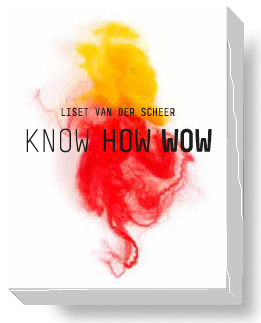



Yarn
anemone
There are various ways to get a stippling effect in yarn. A twine effect, a spin effect, printing, or sprinkling coloured dots in a sliver lap.


The dots originated from left to right
– A core spun
– A cabled yarn with a thin black thread entwined.
– A single thread, with a thin black/white yarn around it, in a Z and a S twist so that a cross is formed
– A 3 ply mouliné
– A black cabled yarn with one of the 6 threads in ecru
– An ecru cabled yarn with one of the 6 threads in black
– A single thread yarn with a thin sliver twined in
Cabled yarn (also see Cabled)
The cabled yarn consists of 6 separate single thread yarns that are twined in pairs. Then these 3 threads are joined together, with a rope like effect. The dot effect comes from the different colour thread.
Mouliné
A two- or multi-strand twine in which the strands are of the same thickness but different in color. Shown here is a 3-thread twine where 1 of the 3 threads has a different color.
Nub yarn
This is a single thread-, felted slub yarn with coloured nubs in it.
A slub yarn is a spinning effect: during spinning deliberate thickenings are spun in the yarn. This is done to create a hand spun effect, or to imitate a certain quality like linen or shantung silk.
The thickenings (or slubs) are created here by sprinkling coloured dots on the sliver lap before spinning. This is often done by hand. Better known as Tweed for British jackets.
